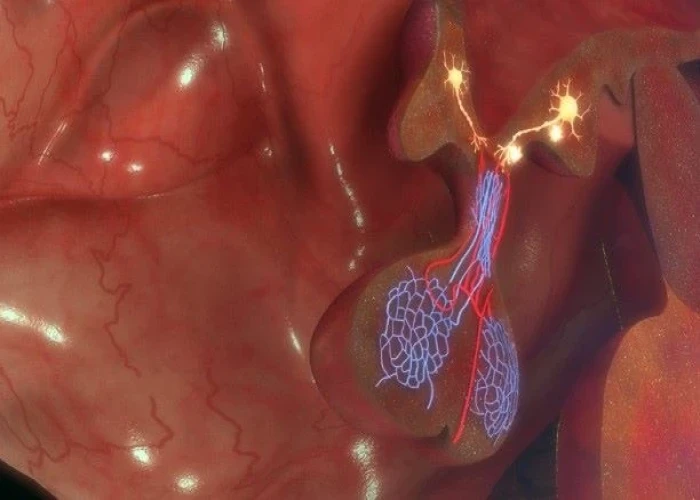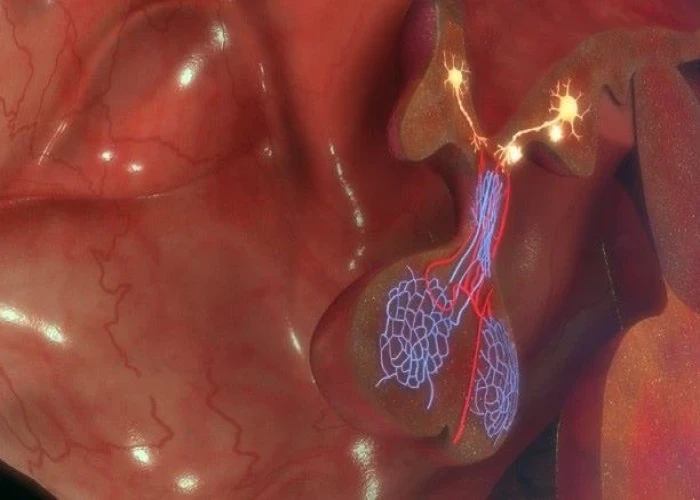 Welcome
Welcome
“May all be happy, may all be healed, may all be at peace and may no one ever suffer."
Pituitary tumors

Pituitary tumors are abnormal growths that develop in the pituitary gland, a small gland located at the base of the brain. The pituitary gland produces hormones that regulate a wide range of bodily functions, including growth, reproduction, and metabolism.
There are two main types of pituitary tumors: functional and non-functional. Functional tumors produce hormones, while non-functional tumors do not. The symptoms of a pituitary tumor depend on the type of tumor and the hormones it produces but may include headache, vision problems, fatigue, weight gain, and changes in menstrual cycles.
Diagnosis of a pituitary tumor may involve imaging tests such as an MRI or CT scan, as well as blood tests to measure hormone levels. A biopsy may also be necessary to confirm the diagnosis.
Treatment for pituitary tumors depends on the size, location, and type of the tumor, as well as the patient's overall health. Treatment options may include surgery to remove the tumor, radiation therapy, and medication to reduce hormone levels.
The prevention of pituitary tumors is not well understood, but early detection and treatment can help prevent complications and improve outcomes. If you experience symptoms of a pituitary tumor, it is important to seek medical attention to receive an accurate diagnosis and appropriate treatment.
Research Papers
Disease Signs and Symptoms
- Headaches
- Blindness (Vision loss)
- Nausea or vomiting
- Weakness
- Sexual dysfunction
- Increased amount of urine
- Weight loss
- Placenta accreta often causes no signs or symptoms during pregnancy although vaginal bleeding during the third trimester might occur.
Disease Causes
Pituitary tumors
The cause of uncontrolled cell growth in the pituitary gland, which creates a tumor, remains unknown.
The pituitary gland is a small, bean-shaped gland situated at the base of your brain, somewhat behind your nose and between your ears. Despite its small size, the gland influences nearly every part of your body. The hormones it produces help regulate important functions, such as growth, blood pressure and reproduction.
A small percentage of pituitary tumor cases run in families, but most have no apparent hereditary factor. Still, scientists suspect that genetic alterations play an important role in how pituitary tumors develop.
Disease Prevents
Disease Treatments
Many pituitary tumors don't require treatment. Treatment for those that do depends on the type of tumor, its size and how far it has grown into your brain. Your age and overall health also are factors.
Treatment involves a team of medical experts, possibly including a nose and sinus surgeon, brain surgeon (neurosurgeon), endocrine system specialist (endocrinologist) and a radiation oncologist. Doctors generally use surgery, radiation therapy and medications, either alone or in combination, to treat a pituitary tumor and return hormone production to normal levels.
Surgery
Surgical removal of a pituitary tumor usually is necessary if the tumor is pressing on the optic nerves or if the tumor is overproducing certain hormones. The success of surgery depends on the tumor type, its location, its size and whether the tumor has invaded surrounding tissues. The two main surgical techniques for treating pituitary tumors are:
- Endoscopic transnasal transsphenoidal approach. This usually enables your doctor to remove the tumor through your nose and sinuses without an external incision. No other part of your brain is affected, and there's no visible scar. Large tumors may be difficult to remove this way, especially if a tumor has invaded nearby nerves or brain tissue.
- Transcranial approach (craniotomy). The tumor is removed through the upper part of your skull via an incision in your scalp. It's easier to reach large or more-complicated tumors using this procedure.
Radiation therapy
Radiation therapy uses high-energy sources of radiation to destroy tumors. It can be used after surgery or alone if surgery isn't an option. Radiation therapy can be beneficial if a tumor persists or returns after surgery and causes signs and symptoms that medications don't relieve. Methods of radiation therapy include:
- Stereotactic radiosurgery. Often delivered as a single high dose, this focuses radiation beams on the tumor without an incision. It delivers radiation beams the size and shape of the tumor into the tumor with the aid of special brain-imaging techniques. Minimal radiation comes in contact with healthy tissue surrounding the tumor, decreasing the risk of damage to normal tissue.
- External beam radiation. This delivers radiation in small increments over time. A series of treatments, usually five times a week over a four- to six-week period, is performed on an outpatient basis. While this therapy is often effective, it may take years to fully control the tumor growth and hormone production. Radiation therapy may also damage remaining normal pituitary cells and normal brain tissue, particularly near the pituitary gland.
- Intensity modulated radiation therapy (IMRT). This type of radiation therapy uses a computer that allows the doctor to shape the beams and surround the tumor from many different angles. The strength of the beams can also be limited, which means surrounding tissues will receive less radiation.
- Proton beam therapy. Another radiation option, this type uses positively charged ions (protons) rather than X-rays. Unlike X-rays, proton beams stop after releasing their energy within their target. The beams can be finely controlled and can be used on tumors with less risk to healthy tissues. This type of therapy requires special equipment and isn't widely available.
The benefits and complications of these forms of radiation therapy often aren't immediate and may take months or years to be fully effective. A radiation oncologist will evaluate your condition and discuss the pros and cons of each option with you.
Medications
Treatment with medications may help to block excess hormone secretion and sometimes shrink certain types of pituitary tumors:
- Prolactin-secreting tumors (prolactinomas). The drugs cabergoline and bromocriptine (Parlodel, Cycloset) decrease prolactin secretion and often reduce tumor size. Possible side effects include drowsiness, dizziness, nausea, nasal stuffiness, vomiting, diarrhea or constipation, confusion, and depression. Some people develop compulsive behaviors, such as gambling, while taking these medications.
- ACTH-producing tumors (Cushing syndrome). Medications to control excessive production of cortisol at the adrenal gland include ketoconazole, mitotane (Lysodren) and metyrapone (Metopirone). Osilodrostat (Isturisa) also decreases cortisol production. Potential adverse effects include a heart conduction abnormality that can lead to serious heartbeat irregularity. Mifepristone (Korlym, Mifeprex) is approved for people with Cushing syndrome who have type 2 diabetes or glucose intolerance. Mifepristone does not decrease cortisol production, but it blocks the effects of cortisol on your tissues. Side effects may include fatigue, nausea, vomiting, headaches, muscle aches, high blood pressure, low potassium and swelling.
- Pasireotide (Signifor) works by decreasing ACTH production from a pituitary tumor. This medication is given as an injection twice daily. It is recommended if pituitary surgery is unsuccessful or cannot be done. Side effects are fairly common, and may include diarrhea, nausea, high blood sugar, headache, abdominal pain and fatigue.
- Growth hormone-secreting tumors. Two types of drugs are available for these types of pituitary tumors and are especially useful if surgery has been unsuccessful in normalizing growth hormone production. One type of drugs known as somatostatin analogs, which includes drugs such as octreotide (Sandostatin, Sandostatin LAR Depot) and lanreotide (Somatuline Depot), causes a decrease in growth hormone production and may shrink the tumor. These are given by injections, usually every four weeks. An oral preparation of octreotide (Mycapssa) is now available and has similar efficacy and side effects as the injectable preparation.
- These drugs can cause side effects such as nausea, vomiting, diarrhea, stomach pain, dizziness, headache and pain at the site of injection. Many of these side effects improve or even go away with time. They can also cause gallstones and may worsen diabetes mellitus.
- The second type of drugs, pegvisomant (Somavert), blocks the effect of excess growth hormone on the body. This drug, given by daily injections, may cause liver damage in some people.
Replacement of pituitary hormones
If a pituitary tumor or surgery to remove it decreases hormone production, you'll likely need to take replacement hormones to maintain normal hormone levels. Some people who have radiation treatment also need pituitary hormone replacement.
Watchful waiting
In watchful waiting — also known as observation, expectant therapy or deferred therapy — you might need regular follow-up tests to determine if your tumor grows. This might be an option if your tumor isn't causing signs or symptoms.
Many people with pituitary tumors function normally without treatment if the tumor isn't causing other problems. If you're younger, watchful waiting can be an option as long as you accept the possibility of your tumor changing or growing during the observation period, possibly requiring treatment. You and your doctor can weigh the risk of symptoms developing versus treatment.
Disease Diagnoses
Disease Allopathic Generics
Disease Ayurvedic Generics
Disease Homeopathic Generics
Disease yoga
Pituitary tumors and Learn More about Diseases

Wheat allergy

Dyslexia

Paget's disease of the breast

Dumping syndrome

Alpha-gal syndrome

Lung cancer

Thrombophlebitis

Liver hemangioma
pituitary tumors, পিটুইটারি টিউমার
To be happy, beautiful, healthy, wealthy, hale and long-lived stay with DM3S.
